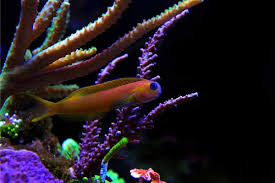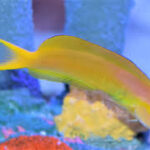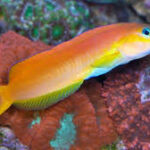Dragons in Chinese Textile Art and Embroidery: A Timeless Symbol

In Chinese culture, the dragon is one of the most potent and revered symbols. As a mythological creature embodying power, wisdom, and auspicious fortune, the dragon has influenced various facets of Chinese art, culture, and even daily life. One of the most remarkable ways in which the dragon has been expressed is through the art of textile and embroidery. From ancient royal robes to intricate home decorations, dragons have been woven into the fabric of Chinese artistic traditions, each stitch telling a story of cultural significance. This article explores the prominent role of dragons in Chinese textile art and embroidery, tracing their evolution, symbolism, and the intricate techniques used in their creation.
1. The Significance of the Dragon in Chinese Culture
In Chinese tradition, the dragon is much more than just a mythical creature. It is a symbol of imperial power, divine authority, and good fortune. The dragon is seen as a celestial being with control over the elements—especially water, wind, and rain. It is believed to bring prosperity, protect against evil spirits, and provide guidance. Its association with strength and auspiciousness made the dragon an essential motif in Chinese art and culture.
During imperial times, the dragon was considered a representation of the emperor’s connection with the heavens, as emperors were believed to be the “Sons of Heaven.” The dragon’s role as a protector and harbinger of good fortune made it a perfect symbol to adorn the robes, banners, and textiles of the ruling class.
2. The Dragon in Chinese Textile Art: An Overview
Chinese textile art has a long history, dating back over 5,000 years. Over time, the craft of weaving and embroidery has evolved into an intricate art form, often used to convey cultural and symbolic meanings. Textiles adorned with dragon motifs have played an important role in representing status, wealth, and power, especially among the Chinese imperial family.
During the Tang Dynasty (618-907 CE), the use of dragon motifs in textiles became more widespread, reflecting the cultural exchange between China and other parts of Asia. However, it was during the Ming (1368–1644) and Qing Dynasties (1644–1912) that the dragon motif reached its peak in Chinese textile art. The dragon became synonymous with imperial authority, and it was prominently featured on the imperial robes, flags, wall hangings, and other ceremonial objects used by the ruling elite.
Dragons in Chinese textile art were often depicted in a highly stylized manner, with flowing, serpentine bodies, sharp claws, and a powerful, energetic presence. The depiction of the dragon in textile art is not only an aesthetic choice but also a way to communicate specific values, such as strength, protection, and prosperity.
3. Dragon Embroidery in Imperial China
One of the most significant expressions of dragon symbolism in Chinese textile art is through embroidery. Embroidery, as an intricate art form, has been practiced in China for over a thousand years. It is believed that the skill of embroidery was first developed during the Han Dynasty (206 BCE–220 CE) and later refined through successive dynasties.
Embroidered dragon motifs were predominantly used on royal robes and garments, symbolizing the emperor’s divine right to rule. The most famous example of dragon embroidery is the dragon robe, also known as the “longpao”. Worn by emperors, these robes were intricately embroidered with dragons and other auspicious symbols to signify the emperor’s supreme authority. The dragon embroidery typically consisted of five claws, as the five-clawed dragon was reserved exclusively for the emperor, symbolizing his imperial power and divine status.
The embroidery of dragons on royal robes was an art form of incredible detail and complexity. The dragon’s body, scales, claws, and fiery breath were carefully stitched using silk threads in various colors, with gold and silver thread often used to add richness and texture to the design. Pearls and precious stones were also incorporated into the embroidery, adding a level of luxury and refinement to the garments.
4. Techniques of Dragon Embroidery
Chinese dragon embroidery is characterized by highly sophisticated stitching techniques that were perfected over generations. Some of the most important techniques used in the creation of dragon motifs include Satin Stitch, French Knot, and Long and Short Stitch. Each stitch contributes to the overall effect, creating an intricate design that is both visually stunning and rich in symbolic meaning.
- Satin Stitch: This technique is used to create smooth, flat areas of color, often used for the dragon’s body or large features. It is done by laying the threads side by side in a uniform direction, creating a lustrous, shiny surface that mimics the smooth scales of the dragon.
- French Knot: Used for adding texture to details such as the dragon’s eyes or decorative elements around its body, the French Knot technique adds a sense of depth and dimension to the design. It also adds an element of luxury, as the thread is often wrapped around several times to create a dense, raised knot.
- Long and Short Stitch: This stitch is used to create variations in texture and shading, allowing for the dragon’s body to have a more lifelike appearance. It is particularly useful in creating the flowing mane or tail of the dragon, as it allows for a softer, more fluid representation of the creature.
These techniques, combined with the use of precious materials such as gold, silk, and jade, made dragon embroidery a highly valued craft, passed down through generations of skilled artisans.
5. The Dragon as a Symbol in Textile and Embroidery
The dragon’s symbolism in Chinese textile art and embroidery extends far beyond the imperial context. In addition to representing imperial authority, the dragon also symbolizes good fortune, power, and prosperity. The belief in the dragon’s auspicious qualities made it a common motif in various forms of embroidery, not just in royal attire but also in the decoration of everyday items such as rugs, pillows, wall hangings, and tapestries.
For the general population, dragon motifs in textile art were often used in weddings, festivals, and celebrations. The dragon was believed to bring luck and prosperity to the household, warding off evil spirits and ensuring good health. For instance, dragon motifs were often seen on wedding quilts and textiles, symbolizing fertility, unity, and a prosperous future for the couple.
The double dragon motif is especially significant, symbolizing the harmonious union of opposites. In Chinese philosophy, the dragon represents strength and power, while the phoenix symbolizes beauty and harmony. When these two creatures are depicted together, as seen in embroidery, they represent the balance between strength and beauty, masculine and feminine, and the harmonious flow of yin and yang.
6. The Dragon in Folk Art and Regional Variations
While the dragon is a central motif in imperial art, it is also deeply embedded in Chinese folk art, with regional variations that reflect local traditions and cultural influences. In southern China, for instance, the Cantonese style of embroidery often features dragons in bright, vibrant colors, emphasizing the creature’s fiery and energetic nature. The dragon is portrayed with swirling bodies, often surrounded by flames or clouds, representing its power over the elements.
In contrast, northern Chinese embroidery tends to portray the dragon in a more subdued manner, often using a more minimalist approach with less ornate details. The northern dragon is depicted as more majestic and dignified, reflecting the stoic nature of the northern regions and their cultural emphasis on endurance and resilience.
In Tibetan and Mongolian cultures, the dragon takes on a slightly different appearance. Here, the dragon is often associated with Buddhism and the protector deities of Tibetan monasteries. In Tibetan embroidery, dragons are frequently seen alongside lotus flowers and Buddhist motifs, symbolizing purity and spiritual strength.
7. The Legacy of Dragon Embroidery in Modern China
Despite the decline of the imperial system, dragon motifs continue to be a prominent feature in modern Chinese textile and embroidery. Today, dragon designs can be found on various types of fashion and home décor. Traditional embroidery techniques, such as those used to create dragon motifs, are still practiced by skilled artisans in China, and there is a growing interest in preserving this ancient craft.
Modern-day designers often incorporate the dragon motif into contemporary fashion, using embroidery to blend traditional symbolism with modern aesthetics. Dragon imagery is also popular in home furnishings such as silk cushions, bedding, and wall art, where it continues to represent prosperity, power, and good fortune.
Moreover, many Chinese embassies, cultural institutions, and museums around the world continue to use dragon-themed textiles and embroidery as a means of promoting Chinese culture and heritage. The intricate craftsmanship of Chinese embroidery has become an important part of the global appreciation for traditional Chinese art.
Conclusion
The dragon’s symbolism in Chinese textile art and embroidery is a powerful and enduring testament to its cultural importance. From its imperial associations to its role as a protector of good fortune, the dragon has played an essential part in shaping China’s rich artistic traditions. Through embroidery, this magnificent creature has been brought to life in intricate designs that embody both the spiritual and aesthetic values of Chinese society.
The techniques used to create dragon motifs in textiles—such as satin stitch, French knots, and long and short stitch—demonstrate the immense skill and artistry involved in this ancient craft. Whether adorning the robes of emperors or brightening the homes of common people, the dragon continues to be a symbol of power, protection, and prosperity in Chinese culture.
As Chinese textile art continues to evolve, the dragon remains a timeless and vibrant symbol, woven into the fabric of Chinese cultural heritage for generations to come.

